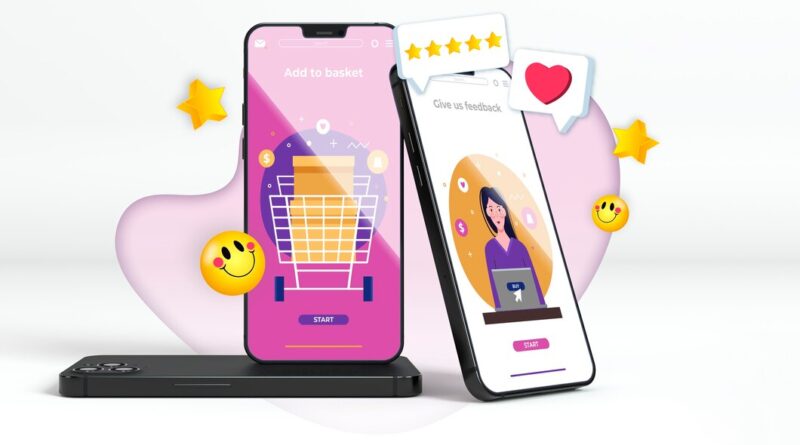An eCommerce mobile app that drives growth: How to build one
In today’s digital world, an eCommerce mobile app is more than just a convenience—it’s a powerful tool that can drive business growth, improve customer experience, and boost revenue. With mobile commerce rapidly gaining dominance, building an effective and engaging eCommerce app has become a necessity for businesses aiming to stay ahead of the competition. But how do you ensure that your mobile app is powerful enough to fuel growth? In this article, we’ll guide you through key strategies and features to build an eCommerce app that attracts and retains customers.
1. Start with User-Centered Design
A successful eCommerce mobile app development starts with a user-centered design. The design and interface of the app should be intuitive, responsive, and easy to navigate. Prioritize user experience (UX) to ensure that your customers can find products, view details, and complete purchases without frustration.
- Minimalist Layout: A clean, clutter-free layout reduces cognitive load and makes the app easier to use.
- Easy Navigation: Categorize products clearly and enable a simple navigation process. Features like search filters, product sorting, and a well-organized menu can enhance the shopping experience.
- Fast Loading Speeds: Optimize images and reduce page load times to provide users with a seamless experience, minimizing bounce rates and boosting conversions.
2. Implement Personalized Experiences
Personalization is a key driver of customer engagement and loyalty. By leveraging customer data, your app can deliver tailored experiences that resonate with each user.
- Product Recommendations: Use AI-powered recommendation engines to suggest products based on user preferences and purchase history. This increases cross-selling and upselling opportunities.
- Personalized Notifications: Push notifications about discounts, offers, and new products that are aligned with the user’s interests and previous behavior can keep customers engaged and drive sales.
3. Streamline the Checkout Process
The checkout process can make or break a sale. A complicated or lengthy checkout can lead to abandoned carts. Streamlining this process will improve conversions and provide a frictionless shopping experience.
- Multiple Payment Options: Offer various payment methods, including credit cards, digital wallets (like Apple Pay or Google Pay), and options for one-click payments.
- Guest Checkout: Allow users to complete purchases without requiring them to create an account. This convenience can boost sales, especially for first-time buyers.
- Auto-Fill Features: Enable auto-fill for billing and shipping information to reduce the time customers spend entering their details.
4. Incorporate Secure Payment and Data Protection
Security is crucial in eCommerce. Customers need to feel confident that their personal and payment information is safe.
- SSL Encryption: Ensure the app uses SSL encryption to protect sensitive data, such as credit card information.
- Two-Factor Authentication: Implement two-factor authentication for added security during account logins and transactions.
- Compliance with Industry Standards: Ensure your app is compliant with PCI DSS (Payment Card Industry Data Security Standard) to build trust with your customers.
5. Leverage Advanced Technology: AI, AR, and Chatbots
Integrating cutting-edge technology into your eCommerce app can enhance user engagement and provide a more immersive shopping experience.
- Artificial Intelligence (AI): AI can be used to power product recommendations, customer support chatbots, and predictive analytics for understanding purchasing behavior.
- Augmented Reality (AR): AR allows customers to visualize products in real-time. For example, AR can help users “try on” clothes virtually or see how furniture will look in their homes, which can significantly reduce product returns.
- Chatbots for Customer Service: AI-driven chatbots offer instant support, helping users find products, answer questions, or resolve issues without the need for human intervention. This improves customer satisfaction and frees up your customer service team for more complex inquiries.
6. Ensure Scalability for Future Growth
When building your eCommerce mobile app, it’s essential to think long-term. As your business grows, so will the traffic and transactions on your app.
- Cloud-Based Infrastructure: Use cloud-based services to ensure your app can handle an increase in users, orders, and data. Cloud infrastructure allows for easy scalability without downtime.
- Modular Architecture: Develop your app with a modular architecture that allows for seamless integration of new features and updates without disrupting existing functionalities.
7. Implement Mobile Analytics for Continuous Improvement
To continuously improve your app and adapt to changing customer behaviors, you need access to actionable insights.
- User Behavior Tracking: Analyze how customers interact with your app—what products they view, how long they stay on certain pages, and where they drop off during the checkout process.
- A/B Testing: Regularly perform A/B tests to experiment with different design elements, user flows, and features to see what works best for improving conversions.
- App Performance Analytics: Monitor the app’s performance, including load times, crashes, and glitches, and fix issues promptly to ensure a smooth user experience.
8. Focus on Customer Retention Strategies
A powerful eCommerce app not only attracts new users but also retains existing ones. Customer loyalty programs and post-purchase engagement are critical to keeping customers coming back.
- Loyalty Programs: Reward customers for repeat purchases with points, discounts, or exclusive access to new products. These programs can be integrated directly into your app to encourage frequent use.
- Post-Purchase Communication: Engage customers after their purchase by sending order updates, asking for feedback, or offering related product suggestions to encourage future purchases.
Read More Article: Here

